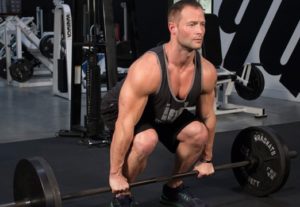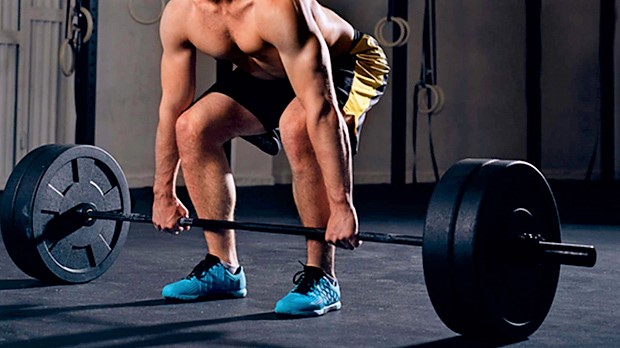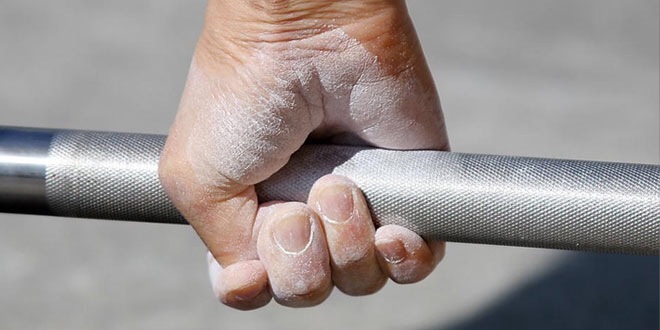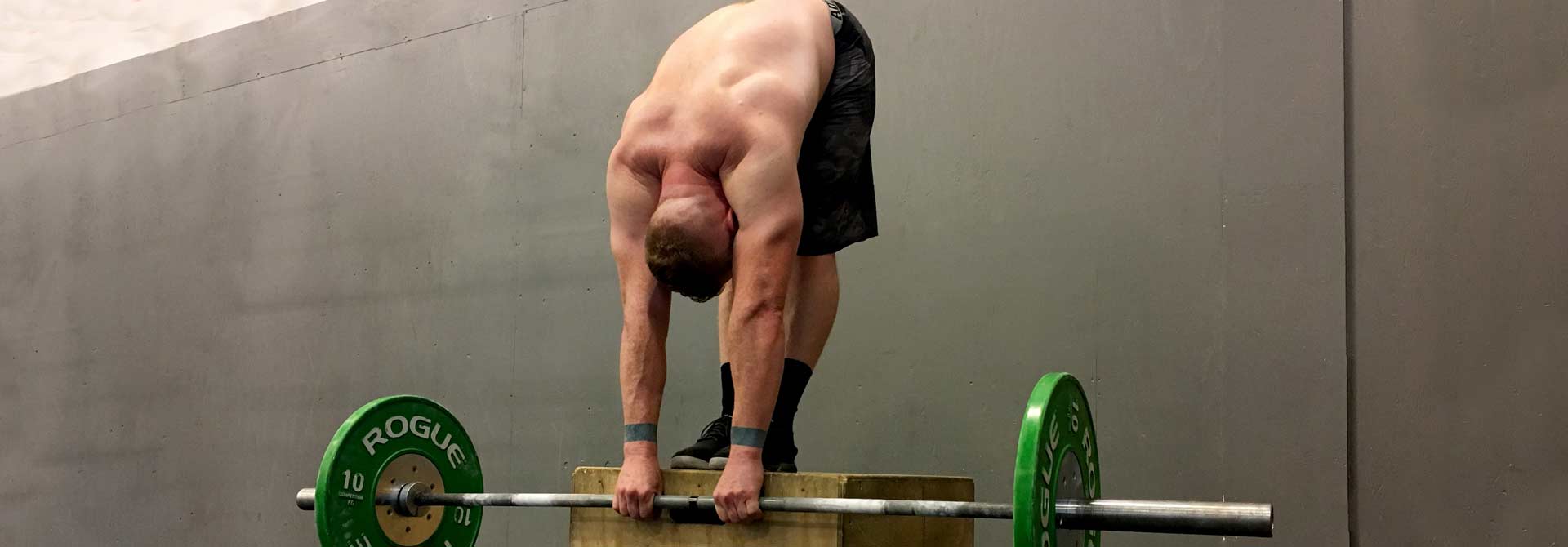The deadlift is probably my favorite out of the big three, and it’s one of those lifts where people really have a lot of trouble with bad form. I mean that in every sense – people freak out and cringe at even a single second of rounding, and a lot of other people have terrible instincts when it comes to how to approach the deadlift the first time around. If you wedge your deadlift and lift mostly with your legs (and finish with your hips), you should never have back pain. On the other hand, there are plenty of people who put their backs under incredible strain when attempting a deadlift. I never really understood why doctors and “experts” would tell people to stop deadlifting until I had a look around and saw what passes as a deadlift in some cases.
In terms of the concept itself, the deadlift should be an incredibly simple exercise. You pick a heavy weight up and put it back down. To me, it’s been a very natural thing to do, and I learned fairly early on what good form looks like. The deadlift is home to me.
But I’m not really in the majority. A lot of people spend much more time bench pressing or being perfect at the squat. Everyone has their best and favorite lift, and for most beginners, the deadlift is much more intimidating than a squat or a bench press. A lot of people write about how deadlifts feel terrible, and how they’re uncomfortable, or difficult to do. Some people talk about how they’re not safe. I’d like to address this first.
Deadlifts Are Safe If Done Right
You’ve heard it time and time again – deadlifts will wreck your back, if not now, then someday, especially as you get older and the scars of your training start to appear.
First of all – if you don’t deadlift in a powerlifting sense, then just like with every other lift, there’s never a reason to hit a 1RM. Without hitting a 1RM, your risk of injury dramatically decreases. If you do a sport, however, your risk of injury explodes. And it doesn’t matter what that sport is. Powerlifting is safer than weightlifting and any given contact sport, but it’s still a sport, and your body will feel worn down.
But if you’re not stupid, you can still be a strong and healthy old man or woman despite a history of competitive powerlifting. Blaming deadlifts for back problems is especially dumb, when deadlifting has proven to do nothing but strengthen the back when done properly, which leads to myriad of health benefits, not the least of which is less back pain.
However, “done properly” is an important key point. A proper deadlift moves in a straight bar path, with the shoulders starting just around above the bar, with a “dead hang” in the arms (meaning you’re not attempting to row the weight), with the back stable, the spine supported, the core braced, and no hitching (which messes up the bar path anyway, and is a sign of a terrible lift). Heavy deadlifts put an insane amount of stress on the erectors, lats, core, legs, glutes, and traps. Ideally, you should be wedging your hips into the bar before you lift, creating tension throughout the whole body. Your body should be rigid and tight, your spine protected against any possible shearing force. Your entire back and posterior chain get to play a part in getting the weight up, and in turn, you’ll get stronger, and bigger.
Or, you do it wrong (or overdo it), and hurt yourself. Like with absolutely anything else. Now, onto pulling efficiently, and not with terrible form.
Wedge Your Deadlift
The first lesson in a good deadlift is, as I’ve mentioned, wedging your hips into the bar. Yes, wedge your deadlift. If you think of the bar as a heavy load in the form of something rectangular or square, then your body should be a wedge, getting under said load to force it up. Now, that doesn’t mean I want you to Zercher the weight up, or literally climb under the barbell and push it up. Instead, think of your usual deadlift form. Now, to tighten up, think of moving your hips into the bar – not just forward, but also not down, just into it. To do so, start by finding the right position for your hips to be in in the first place. This depends entirely on your anatomy.
Step By Step
The steps to finding your hip height in a deadlift are:
- Step into position under the bar, with the bar over your midfoot. Not close the shin, and not at your toes – your exact midfoot, starting from the heel to the toes. This should be roughly in the middle of your shoelaces, or somewhere close to the ankle.
- Stack your spine. Pay attention to your hips, abs, chest, and neck. Look in a mirror, and adjust your body to get a neutral, stacked spine. There are dozens of images online to help you understand what that looks like, but the idea is that your chest, core, and hips are in alignment. Remember how that feels in your back because you’ll have to get into that position before you start your lift.
- Raise your arms to feel your lats stretch and hold onto that feeling. Then, bring them down and try to tighten them as you do so. To make sure you’re doing it right, think of gripping the bar overhand while twisting your biceps forward, essentially putting a lot of torque into your arms. This should help you squeeze your lats. Then, pull them into your back pocket. Don’t move the shoulders – just the lats.
- Drop down slowly, bending at the hips and knees. Grab the bar and position your upper body in such a way that your shoulders are just an inch or so ahead of the bar, or more accurately, so that your nipples are right over the barbell. Your hips should ideally be much higher than they would be in a squat position.
- Now, pull your chest up, keep your neck in line with your spine in a neutral position, and make sure to take an incredibly deep breath.
If you did things right, you should feel very tight, very tense, with your body wedged as close to the bar as humanly possible without turning the whole thing into a squat. If done right, you can rock back just a tiny bit and watch a light bar come off the ground almost effortlessly, depending on your bodyweight. That’s how you wedge your deadlift. If I set up this way with my warmup sets, just the slightest shift back will make the bar jump up. Learning to wedge your deadlift will cause you to struggle to properly lift without a substantial counterweight on the bar – that’s a good thing because it means you’re starting to learn to use your body properly.
Now, here’s what you don’t want:
Don’t Look Up or Down
Your neck is part of your spine, and when I say your spine needs to be neutral, that includes every single part of your spine. Position your neck and head in such a way that everything is stacking up, as previously mentioned. This counts for the lift, too. Look ahead, depending on what ahead means as per what angle your spine is in throughout the lift. You should lock out staring straight ahead and set up staring just a few feet away from you, at a point on the floor.
Don’t Squat Your Deadlift
One mistake many people make when wedging is that they scoot their butt too low. Or, they lean back to get their shins straight, but in doing so get their hips low.

To wedge your deadlift, contract your upper body, engage your lats, and pull your chest up high (without extending the thoracic) in order to get that level of tension that we call wedging. By keeping your hips at a higher position than in the squat, you can reduce the range of motion for your hips, better distribute the load between the upper back and the lower body, and make sure that you’re using your body in the most efficient way to move the weight up.
More importantly, the thing about the deadlift is that it doesn’t matter how you start, because as soon as even just a moderately heavy weight is off the floor, your body will assume these angles naturally. When you start to wedge your deadlift, things fall into place. Your hips, back, and arms will go into proper alignment. Starting off right helps you actually get the weight off the floor, not injure yourself, and saves a lot of time and energy.
One thing that must be noted is that while you shouldn’t squat the weight, you also shouldn’t pull with the back. The pull begins once the bar is juts about over or around the knee. The entire early portion of the lift consists of pushing through the ground, more specifically, pushing the ground away from the barbell. Remember, wedge your deadlift. You want to imagine you’re creating space between the barbell and the ground with your legs, before finishing the lift with your upper body by locking out.
P.S.: I love lower body training.
This little section doesn’t really have anything informative to say. It’s just a little information about how I feel about pulling and squatting, and the history behind why these two lifts matter to me and my idea of strength. You can skip it if you’d like.
My first day at the gym was about as bad as you could expect. I could do about a dozen strict pushups, no pullups, and my squat form was so terrible that I couldn’t hit depth and regularly fell back on my ass every single time I attempted to squat without raising my heels. I can’t even remember what my back was doing. The idea of squatting, in general, seemed absolutely alien to me. Weeks of hitting machine after machine helped me improve a little bit, but my squat was always terrible.
Eventually, for several reasons, going to the gym was no longer an option. I started training in my backyard like every young man generally does when they get hooked on the high of training. But I still couldn’t squat for shit.
I went from being unable to hit depth without falling over to squatting the bar, and then the bar with some weight. After a while, I hit a bodyweight squat – and it kept rising, slowing down somewhere around 220lbs. Still a weak lift, but considering where I was, and where I had gone, I made considerable progress in just over a year of dedicated lifting.
On the other hand, my deadlift has always grown effortlessly. The first time I pulled as a scrawny teen, I worked up to 1.5x bodyweight for reps. I obviously never hit a max as a teen, but a double bodyweight pull felt good, with no training. When I started picking up strength training a little more seriously, I trained the deadlift half as often as my squat, and sometimes not at all, and I can pull a 140% of my squat for a rep or two on any given day. Note: that might say more about my squat than my deadlift, but alas. It’s the one lift I’m genuinely happy with.
The hard work and countless hours poured into improving my squat from absolute dogshit into something passable, alongside the pure joy of performing a lift I feel actually fits my body best, means leg day is always a great time for me. It doesn’t matter if I’m doing low bar squats, high bar squats, deadlifts or sumos on any given day. And when it’s time to work on my bench, I longingly look over to see someone squatting or pulling, wishing I’d be doing that instead.
Ready to Take Your Fitness to the Next Level?
Whether it's power building, recovery, or nutrition, our experts are here to help you succeed. Contact us today to get personalized advice, support, and a tailored plan that fits your goals.
Let’s build the strength and body you deserve!
CONTACT US NOW




